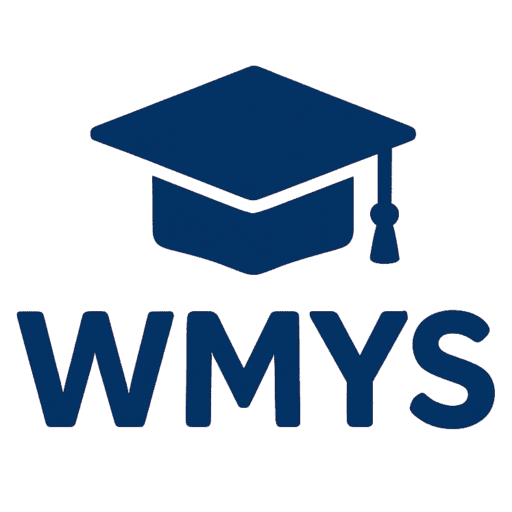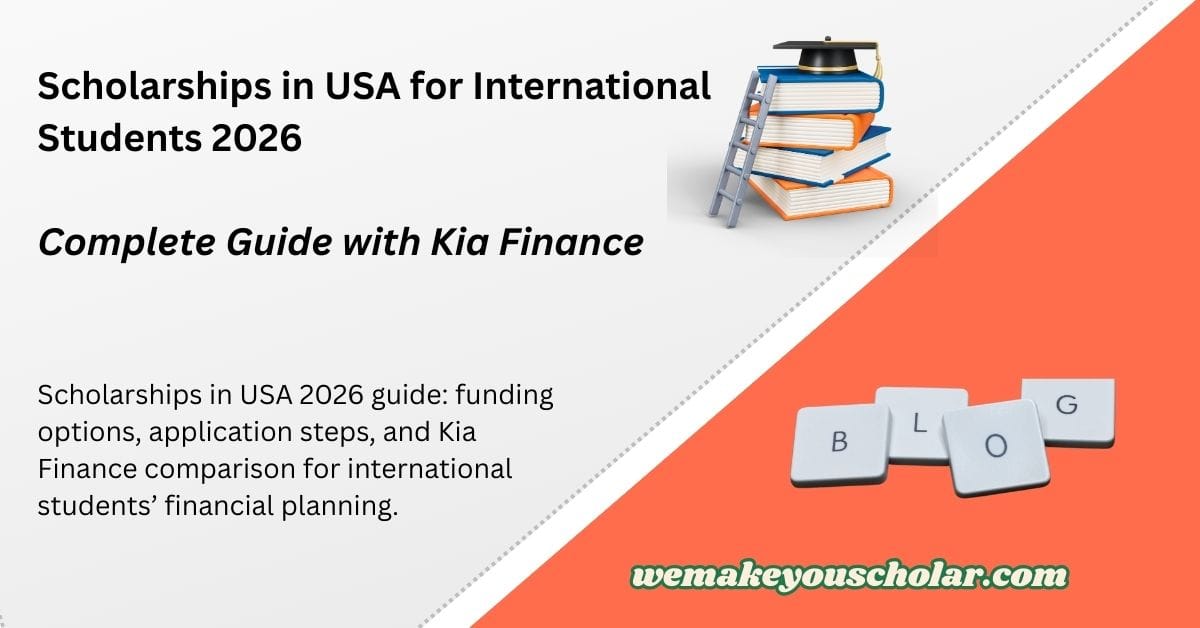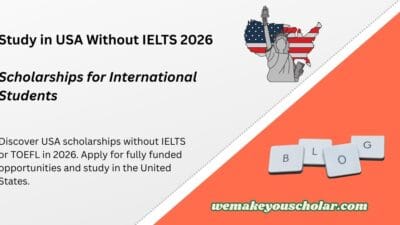Scholarships and Student Finance in the USA 2026: A Complete Guide for International Students
Learning and extended residence in the United States are a ideal destination for numerous foreign students. Although US provides world-class universities, state-of-the-art research centers, and multicultural experiences. But one of the most significant challenges students encounter is the exorbitant expense of studying. Fees, boarding, traveling, and day-to-day expenses can easily become pricey.
In order to overcome these financial challenges of foreign students like living costs, personal transport, and even vehicle ownership can impose additional financial burdens. It has been observed that numerous students in the United States seek auto finance solutions like Kia Finance to take care of car expenses while pursuing scholarships for lowering tuition fees.
In this article, we will provide a comprehensive guide that covers:
Major scholarships available for international students in the U.S.
How to apply for scholarships step-by-step.
Financial planning tips for students.
A comparison between education funding vs. auto financing with references to Kia Finance.
Practical examples and FAQs to help you make the right decision.
Why Scholarships Matter for International Students in the USA
Studying in the U.S. is expensive as compare to other provding countries. According to the College Board, the average annual tuition fees are:
$26,000+ at public universities (out-of-state).
$35,000–$55,000 at private universities.
After including living expenses, health insurance, and travel, the total cost can exceed $50,000 per year. For students specially from developing countries, this is often beyond their reach. Scholarships provide a lifeline by covering partial or full tuition, accommodation, and sometimes even travel costs.
For example:
The Fulbright Scholarship funds graduate students from over 160 countries.
The Knight-Hennessy Scholars at Stanford provides full tuition, stipend, and leadership training.
The American Association of University Women (AAUW) International Fellowship supports women scholars from around the world.
These programs allow top students to study in the U.S. without accumulating massive debt.
Understanding Student Finance: Scholarships vs. Loans vs. Auto Financing
When we talk about student finance, most people think only about scholarships and loans. However, for international students in the U.S., the financial picture is broader. Many students also consider part-time jobs, assistantships to overcome their expenses, and even auto financing for mobility needs for time managenment.
Scholarships and Grants
Do not require repayment.
Awarded based on merit, need, or a combination of both.
Can cover tuition, living costs, and sometimes research expenses.
Student Loans
Require repayment with interest.
Available mostly to U.S. citizens or permanent residents.
International students may need a U.S. co-signer to access private loans.
Auto Financing (Example: Kia Finance)
Many students in the U.S. need cars to commute between campus, internships, and housing.
Auto loans such as those offered by Kia Finance allow students (or their families) to spread out car payments over several years.
Unlike scholarships, these loans must be repaid with interest.
👉 Example: An international student studying in Texas might get a scholarship for his tuition fee, but still need a car to move around. In such cases, their family could use Kia Finance to purchase a car, while the student applies for scholarships to manage tuition.
Top Scholarships for International Students in the USA
1. Fulbright Foreign Student Program
Covers tuition, airfare, health insurance, and living stipend.
Available for master’s and Ph.D. programs.
Highly competitive, requires strong academic and leadership profile.
2. Knight-Hennessy Scholars at Stanford University
Full funding for graduate programs.
Additional leadership training, mentorship, and networking.
Accepts students from all disciplines.
3. Hubert H. Humphrey Fellowship
Non-degree program for mid-career professionals.
Covers living expenses, tuition, and professional development.
4. American University Emerging Global Leader Scholarship
Designed for high-achieving international students committed to positive civic change.
Covers tuition and living expenses, excluding non-billable costs.
5. AAUW International Fellowship
Specifically for women students.
Provides funding for graduate or postgraduate study in the U.S.
6. Joint Japan/World Bank Graduate Scholarship
Supports students from developing countries pursuing development-related master’s programs.
Step-by-Step Guide to Applying for Scholarships
Step 1: Research Early
Start 12–18 months before your intended program begins. Use platforms like:
EducationUSA
Official university websites
Fulbright and AAUW portals
Step 2: Prepare Strong Application Materials
Academic transcripts
Recommendation letters
Statement of purpose
Research proposal (if applicable)
Step 3: Standardized Tests
Many U.S. universities require TOEFL/IELTS, GRE, or GMAT.
Step 4: Apply Before Deadlines
Deadlines often fall between October and February for the following academic year.
Step 5: Prepare for Interviews
Some scholarships, like Fulbright, include interviews as part of the process.
Comparing Kia Finance with Scholarships: A Practical Example
Let’s imagine two students, both studying at the University of Illinois:
Student A receives a partial scholarship covering tuition. However, they need reliable transportation to commute to their internship downtown. Their family uses Kia Finance to purchase a Kia Forte, paying monthly installments spread across 48 months.
Student B has no scholarship. They take out private student loans for tuition and also use Kia Finance to finance a car. Over time, their debt burden becomes overwhelming.
👉 The lesson: Scholarships reduce long-term debt. Auto financing like Kia Finance can be practical for transportation, but it should never replace scholarships or grants as a primary funding strategy.
Financial Planning Tips for International Students
Prioritize Scholarships Over Loans – Scholarships are free money, while loans create debt.
Budget Wisely – Create a monthly budget for food, rent, transportation, and entertainment.
Consider On-Campus Jobs – Many universities allow international students to work up to 20 hours per week.
Use Auto Finance Cautiously – If you need a car, consider affordable financing options like Kia Finance, but avoid luxury vehicles.
Explore Fee Waivers – Many U.S. universities provide application fee waivers for low-income students.
Common Mistakes Students Make
Applying to only one or two scholarships.
Ignoring small, local scholarships.
Submitting generic essays instead of personalized ones.
Taking unnecessary loans when scholarships were possible.
Overcommitting to auto loans like Kia Finance without considering long-term repayment.
FAQs
Q1. Can international students in the U.S. use Kia Finance?
Yes, but usually through a U.S. co-signer or family member. Kia Finance is designed for vehicle purchases, not education costs.
Q2. Are scholarships better than loans?
Yes. Scholarships are non-repayable, while loans (including auto loans like Kia Finance) must be repaid with interest.
Q3. Do U.S. universities provide full scholarships?
Some do, like the Knight-Hennessy Scholars at Stanford and Fulbright, but competition is high.
Q4. Can I combine scholarships and part-time work?
Yes. Many students use scholarships for tuition and part-time work for living expenses.
Conclusion
For international students, studying in the U.S. is both exciting and financially challenging. Scholarships remain the best funding option because they reduce debt and open opportunities for global exposure. At the same time, students often face additional financial responsibilities like transportation. In such cases, services like Kia Finance provide auto financing solutions, but they should be seen as supporting tools, not substitutes for scholarships.
By applying early, preparing strong applications, and budgeting wisely, international students can secure the right mix of scholarships and financial support to succeed in the U.S.




